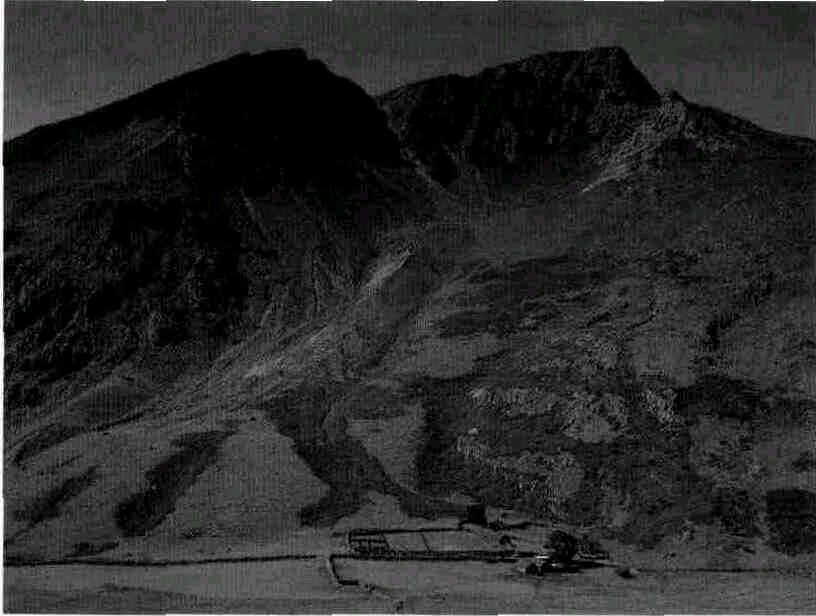
- •20 Food and drink 184
- •21 Sport and competition 191
- •23 Holidays and special 208 occasions
- •Introduction
- •10 I Country and people
- •12 I Country and people
- •14 I Country and People
- •2 History
- •16 2 History
- •18 2 History
- •It was in this period that Parliament began its gradual evolution into the democratic body which it is today. The word 'parliament',
- •20 2 History
- •22 2 History
- •24 2 History
- •26 2 History
- •28 2 History
- •30 2 History
- •32 3 Geography Climate
- •It was in Britain that the word 'smog' was first used (to describe a
- •36 3 Geography
- •38 3 Geography
- •40 3 Geography
- •Part of Snowdonia National Park
- •4 Identity
- •44 4 Identity
- •IrroubleatLllangybi
- •46 4 Identity
- •48 4 Identity
- •50 4 Identity
- •52 4 Identity
- •54. 4 Identity
- •5 Attitudes
- •58 5 Attitudes
- •60 5 Attitudes
- •62 5 Attitudes
- •64 5 Attitudes
- •66 5 Attitudes
- •In the history of British comedy,
- •6 Political life
- •68 6 Political life
- •70 6 Political life
- •72 6 Political life
- •74 6 Political life
- •6 Political life
- •78 7 The monarchy
- •The reality
- •84 8 The government
- •86 8 The government
- •88 8 The government
- •In comparison with the people of
- •9 Parliament
- •92 9 Parliament
- •94 9 Parliament
- •96 9 Parliament
- •100 10 Elections
- •102 10 Elections
- •104 10 Elections
- •I've messed up my life
- •Serb shelling halts un airlift
- •2 January is also a public holiday in
- •Identity 42—55
- •Illustrations by:
40 3 Geography
Part of Snowdonia National Park

Wales
As in Scotland, most people in Wales live in one small part of it. In the Welsh case, it is the south-east of the country that is most heavily
populated. Coal has been mined in many parts of Britain, but just as British people would locate the prototype factory of the industrial revolution in the north of England, so they would locate its prototype coal mine in south Wales. Despite its industry, no really large cities have grown up in this area (Cardiff, the capital of Wales, has a population of about a quarter of a million). It is the only part of Britain with a high proportion of industrial villages. Coal mining in south Wales has now ceased and, as elsewhere, the transition to other forms of employment has been slow and painful.
Most of the rest of Wales is mountainous. Because of this, communication between south and north is very difficult. As a result, each part of Wales has closer contact with its neighbouring part of England than it does with other parts of Wales: the north with Liverpool, and mid-Wales with the English west midlands. The area around Mount Snowdon in the north-west of the country is very beautiful and is the largest National Park in Britain.
Northern Ireland
With the exception of Belfast, which is famous for the manufacture of linen (and which is still a shipbuilding city), this region is, like the rest of Ireland, largely agricultural. It has several areas of spectacular natural beauty. One of these is the Giant's Causeway on its north coast, so-called because the rocks in the area form what look like enormous stepping stones.
Questions and suggestions 41
QUESTIONS
1 Bearing in mind its climate and general character, which part of Britain would you choose to live in? Why? Is this the same part that you would like to visit for a holiday? Why (not)?
2 How is the pattern of human settlement in your country different from that in Britain?
3 Does the capital city of your country stand in the
same relation to the rest of the country as I
London does to Britain?
4 The two big television news organizations in Britain, the BBC and ITN, both have 'North of England' correspondents. But neither has a 'South of England' correspondent. Why do you i think this is? What is it an example of?
5 In the short 'tour' of the regions of Britain in this chapter, some sections are longer than others. This is partly because some regions have 'higher profiles' than others - that is, more is known or imagined about them than others. Which are the regions in Britain that seem to have the higher profiles? What do their reputations consist of?
SUGGESTIONS
Spotlight on Britain by Sheerin, Seath and White (Oxford University Press) is a book written for the non-native student of Britain using a geographical approach.
If you enjoy travel writing, there are several books which offer accounts of journeys through or around Britain. The Kingdom by the Sea 'by the respected novelist Paul Theroux (Penguin) is an example. There are many nineteenth-century English novels which invoke a sense of place. The action in Thomas Hardy's novels, such as Return of the Native and Tess of the D'Urbervilles, usually takes place in the south west of England (mainly the county of Dorset), in an area which Hardy called Wessex. Wuthering Heights by Emily Bronte has the Yorkshire moors as its setting. More recently, Graham Swift's novel Waterland (Picador), as its title suggests, takes account of the effect of the landscape of the fens in East Anglia on the actions of the people who live there.
